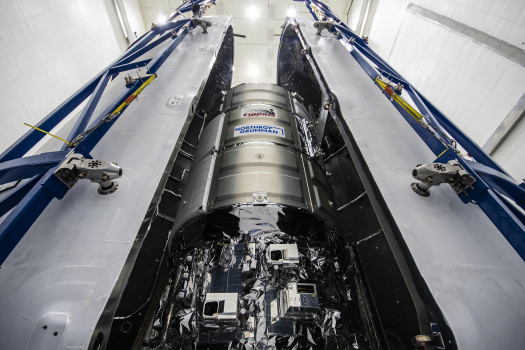The NG-20 mission is now being prepared for the flyby of the Cygnus SS spacecraft Patricia Hilliard Robertson To the International Space Station. However, for the first time, he is flying on a SpaceX Falcon 9 rocket instead of an Antares rocket. This will be the first of three Cygnus missions to fly aboard Northrop Grumman’s Falcon 9 to fulfill its cargo delivery contract while the new Antares 330 is in development.
NG-20 is scheduled to launch on Tuesday, January 30 at 12:07 PM EDT (17:07 UTC) from SLC-40 at Cape Canaveral Space Force Station in Florida. B1077-10 will fly on a path inclined at 51.6 degrees to the equator so that the Cygnus spacecraft is in the same orbital plane as the station. After stage separation, the booster must perform a Return to Launch Site (RTLS) landing and land in Landing Zone 1.
The RTLS landing is scheduled to be the third of this month while some of SpaceX’s offshore assets are in Charleston, South Carolina, for maintenance. This includes a drone ship Just read the instructionsWhich means SpaceX’s East Coast operations are limited to one unmanned ship for now. For this reason, additional RTLS landings may be performed on some Starlink flights over the coming months to relieve pressure on SpaceX’s offshore operations and maintain a high launch cadence.
Tuesday’s weather forecast is 95 percent favorable, according to the U.S. Space Force’s 45th Weather Squadron. The only major concern is the base of the cumulus cloud. Backup days are almost as good. Wednesday’s forecast is 85 percent favorable with the only concern for take-off winds, and Thursday is 90 percent favorable with the same concern for take-off winds.
L-1 weather forecast for NG-20 launch. (Credit: USSF)
B1077 began its career on October 5, 2022, when it launched the Crew-5 mission to the International Space Station. This booster has since flown various missions, including GPS III-6, Inmarsat I-6 F2, Starlink 5-10, CRS-28, Galaxy 37, and Starlinks 6-13, 6-25, and 6-33. Every mission this booster has flown has been from either Pad 39A or SLC-40 in Florida, and all missions thus far have landed on a drone ship. This flight will be the first RTLS landing for a B1077.
After inserting the Cygnus spacecraft into orbit, it will take about two days to reach the International Space Station if all goes as planned. As early as 4:15 a.m. EDT (09:15 UTC) on Thursday, February 1, the S.S. Patricia Hilliard Robertson It will be captured by the station’s Canadarm2. Using the robotic arm, astronaut Yasmine Moghbeli will dock the Cygnus ship to the nadir port (facing Earth) on Unity.
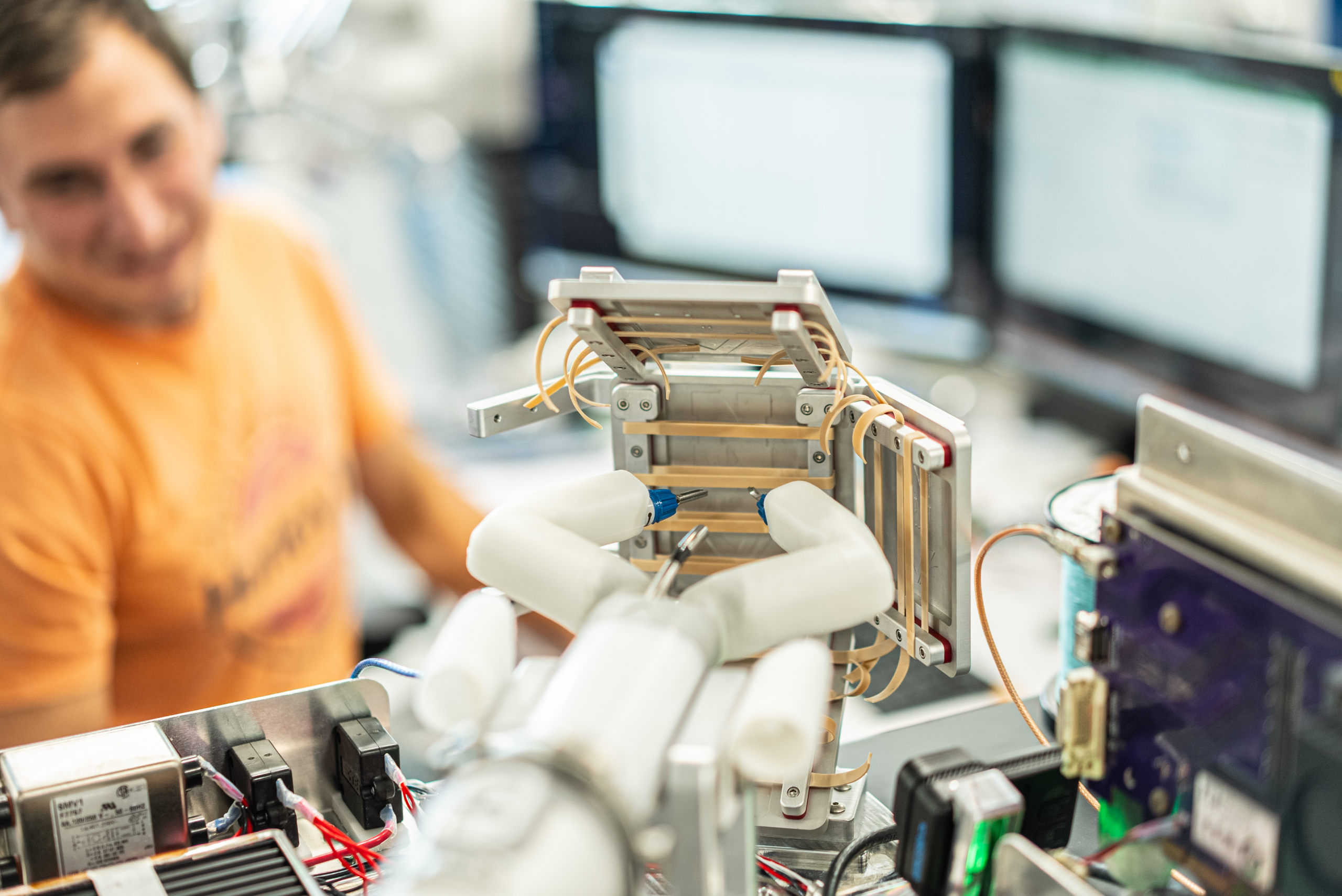
A trial of the surgical robot is seen during ground testing. (Credit: Virtual Notch Company)
The NG-20 will arrive at the terminal carrying approximately 3,750 kilograms of cargo. Cargo aboard Cygnus includes the first surgical robot to be flown to the International Space Station as well as a metal 3D printer that will test print small metal parts. In addition, there are also a 3D chondrocyte culture, an autonomous semiconductor manufacturing platform MSTIC, and three re-entry capsules that will test different heat shield materials aboard Cygnus, along with supplies for the station’s crew.
In addition to the experiments, iROSA’s solar array upgrade kit will be sent to the station aboard NG-20. This is the seventh upgrade kit and the third of four modification kits required to allow the installation of the final set of these upgraded arrays. Replacement modules of station equipment, such as a hydrogen dome array, ARED exercise machine, ion exchange bed, catalytic reactor, urine treatment array, and others are also on board Cygnus.
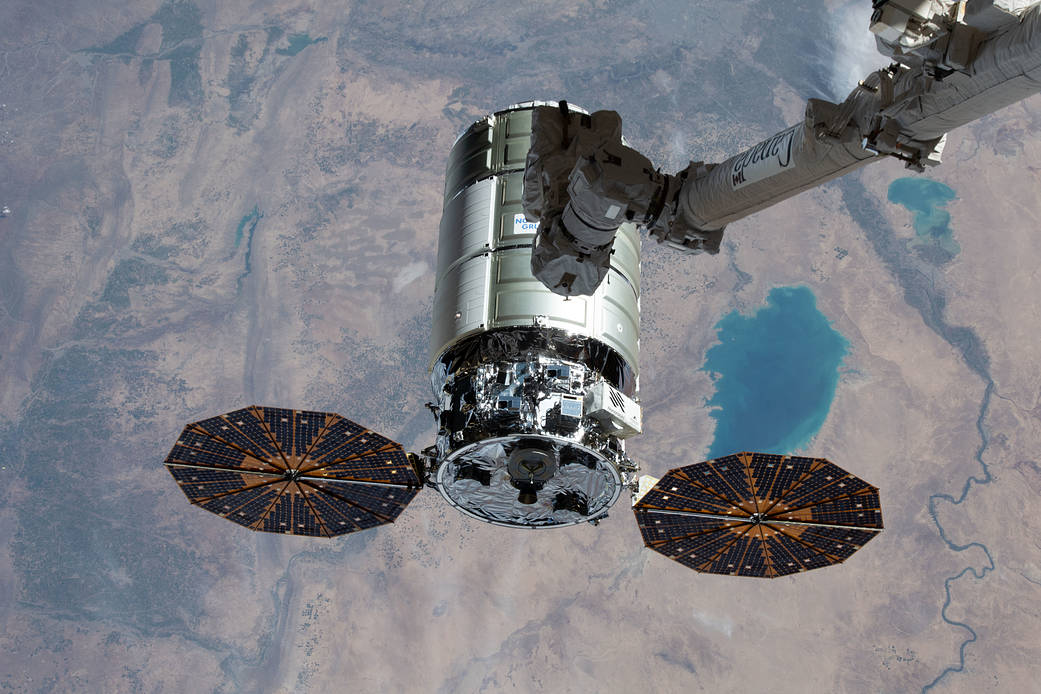
Northrop Grumman’s Cygnus cargo spaceship is photographed moments away from capture using the Canadarm2 robotic arm during a previous mission. (Credit: NASA)
SS Patricia Hilliard Robertson It is scheduled to remain docked at the ISS until May and could be called upon to conduct orbital reboost maneuvers during its stay. When it is time to get off the platform, it will be loaded with trash from the station before getting off the platform.
After departure, Cygnus will be required to perform a destructive reentry over the South Pacific Ocean after launching the University of Kentucky’s KREPE-2 reentry experiment with three capsules equipped with different heat shield materials provided by NASA.
Cygnus is named after a member of the 1998 astronaut class who tragically died before she could fly into space. Dr. Patricia “Patty” Hilliard Robertson was an accomplished pilot with over 1,500 flight hours of flight experience, and a physician with degrees in biology and medicine from Indiana University of Pennsylvania and the Medical College of Pennsylvania, respectively.
Robertson was scheduled to fly to the International Space Station in 2002 and served as a crew support astronaut for Expedition 2. She was also the crew health care system office representative. However, she died from her injuries two days after a private plane crash on May 22, 2001, in Manville, Texas.
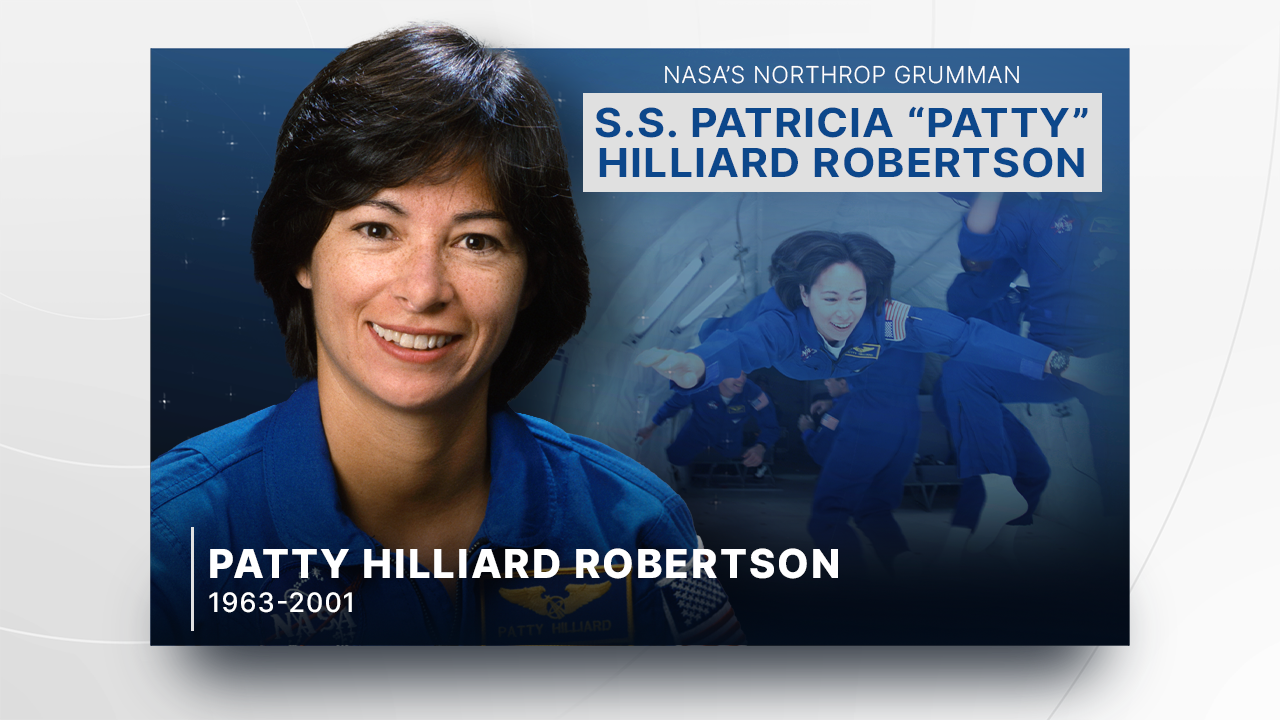
Astronaut Patricia Hilliard Robertson’s name is on the next cargo mission to the International Space Station. (Credit: NASA)
The naming of the spacecraft NG-20 Cygnus is consistent with Northrop Grumman’s tradition – inherited from Orbital Sciences, which originally developed Cygnus – of naming such vehicles after deceased astronauts or other important figures in space exploration. The former Cygnus spacecraft was named after STS-107 crew members Rick Husband, Laurel Clark, and Kalpana Chawla, as well as astronauts Alan Bean, Dick Slayton, Gene Cernan, Roger Chaffee, and others.
For this mission, the Falcon 9 rocket underwent some modifications to launch the Cygnus spacecraft. There is a 1.5 by 1.2 meter (five by four foot) door in the fascia that can be opened to allow late cargo loading, which has been a key feature of Cygnus’ operations with the Antares family of rockets. Once the fairing door is opened, a platform is created that allows access to the Cygnus hatch while the rocket is horizontal.
While the Falcon 9 has been put into service for Cygnus launches for now, the Antares 330, with a new first stage developed in collaboration with Firefly Aerospace, is currently scheduled to fly starting in June 2025. This would restore Northrop Grumman’s ability to operate. The ability to fly Cygnus on its own rockets would also give the company a more competitive launcher for other contracts besides commercial shipping to the International Space Station.
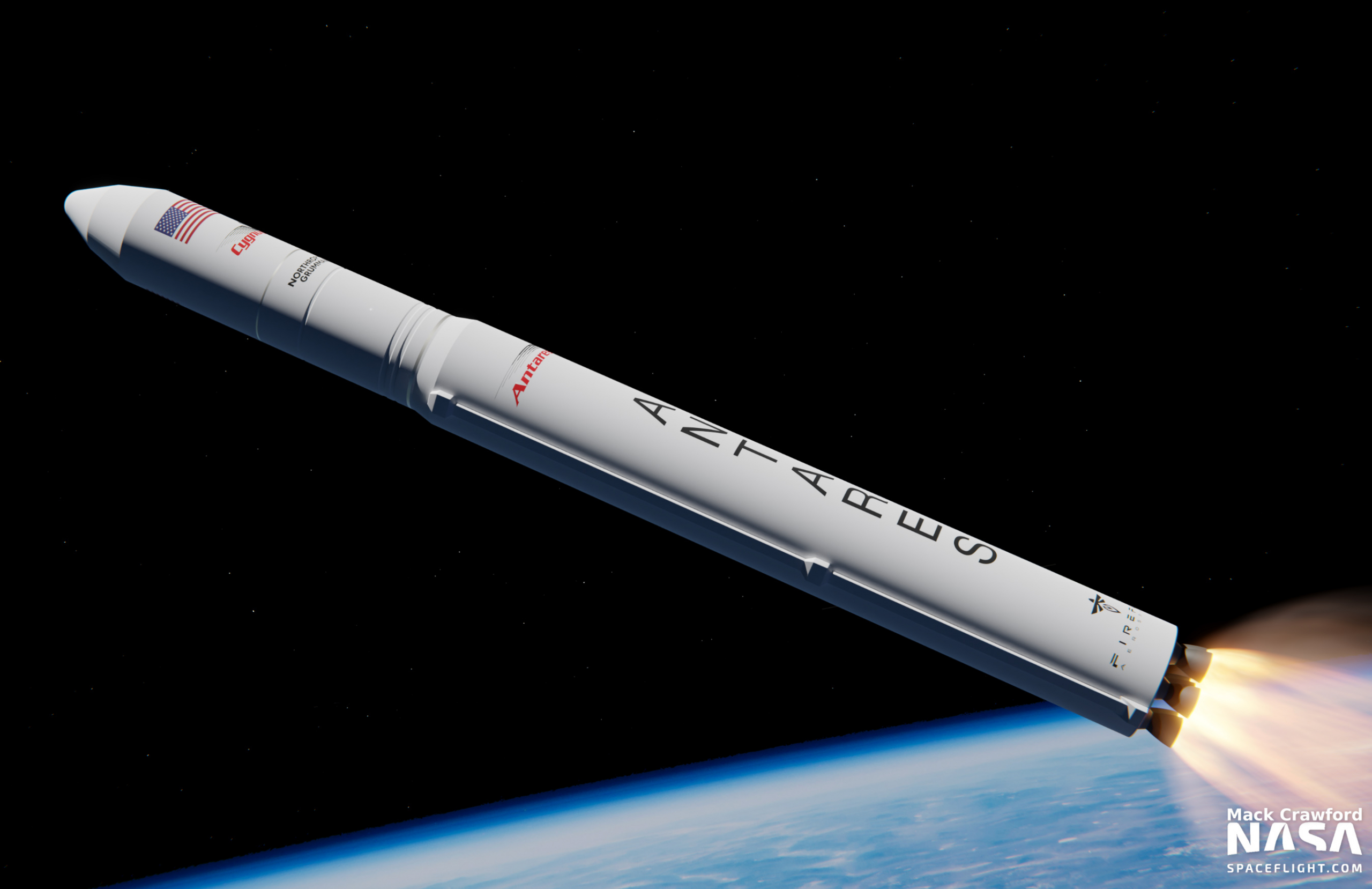
A presentation of the Antares 330. The first stage will be used in the future MLV rocket as well. (Credit: Mac Crawford for NSF)
This is not the first time Cygnus has been launched on vehicles other than Antares. Cygnus was designed to be independent of the launch vehicle, and this capability was first used after the failure of the Orb-3 mission on October 28, 2014. Three launches took place in the 2015-2017 time frame — OA-4 SS dick Slayton II, OA-6 SS rick husband, The OA-7 SS John Glenn – It was flown on ULA’s Atlas V 401 aircraft while the Antares was modified to use a different engine.
Along with NG-20, NG-21 and NG-22 missions are also scheduled to fly aboard Falcon 9, with NG-23 becoming the first Cygnus mission aboard Antares 330. Confirmed launch dates for NG-21 and NG-22 have not been set. After set. Meanwhile, NG-20 is scheduled to be the 10th launch of a Falcon 9 rocket in 2024, as SpaceX continues to attempt as many as 148 launches in this calendar year.
(Cygnus SS Patricia Hilliard Robertson before closing the Falcon 9 interface. Image source: Northrop Grumman)
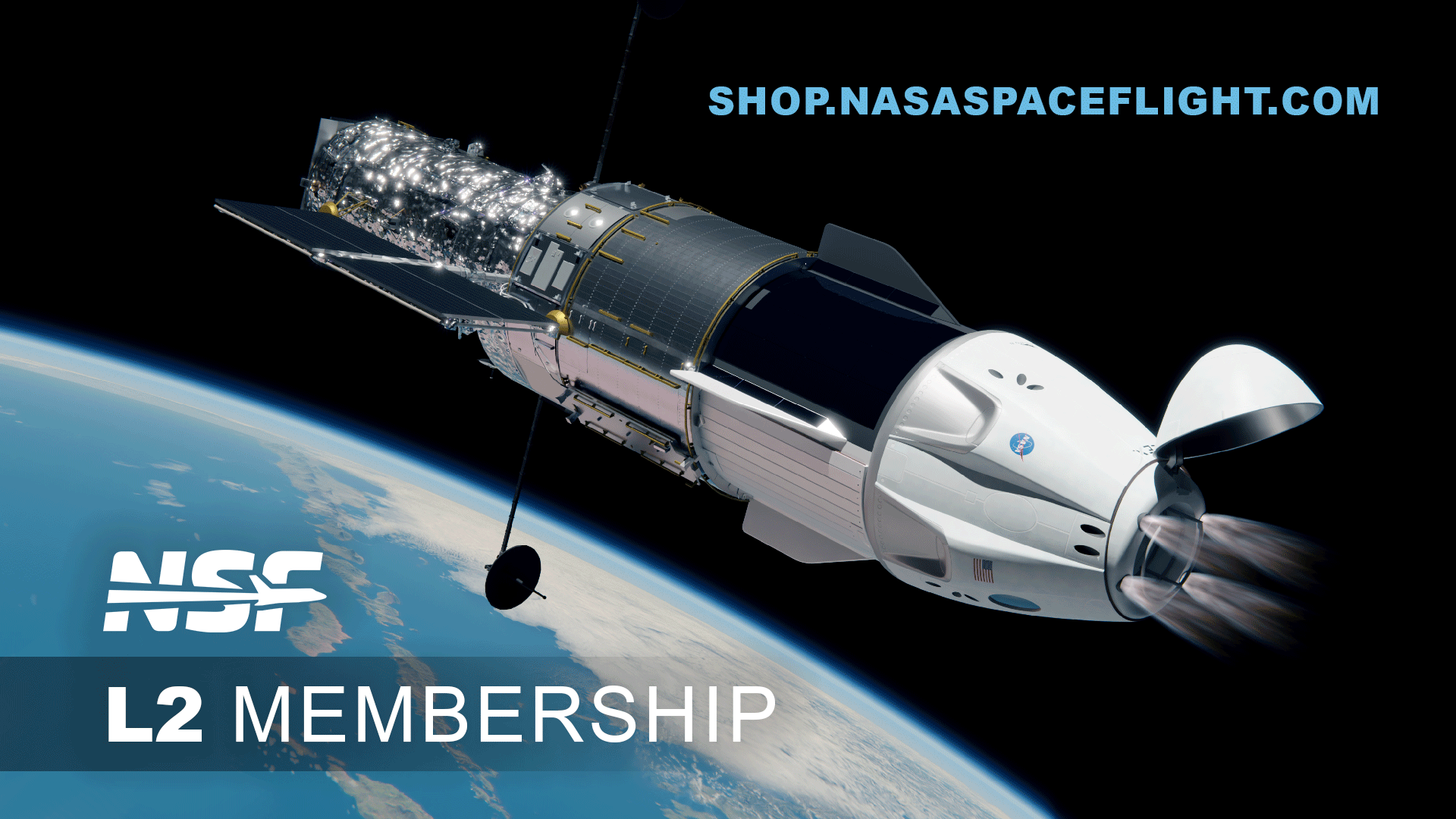
#CRS #NG20 #prepares #launch #cargo #science #International #Space #Station #aboard #Falcon #NASASpaceFlight.com




























